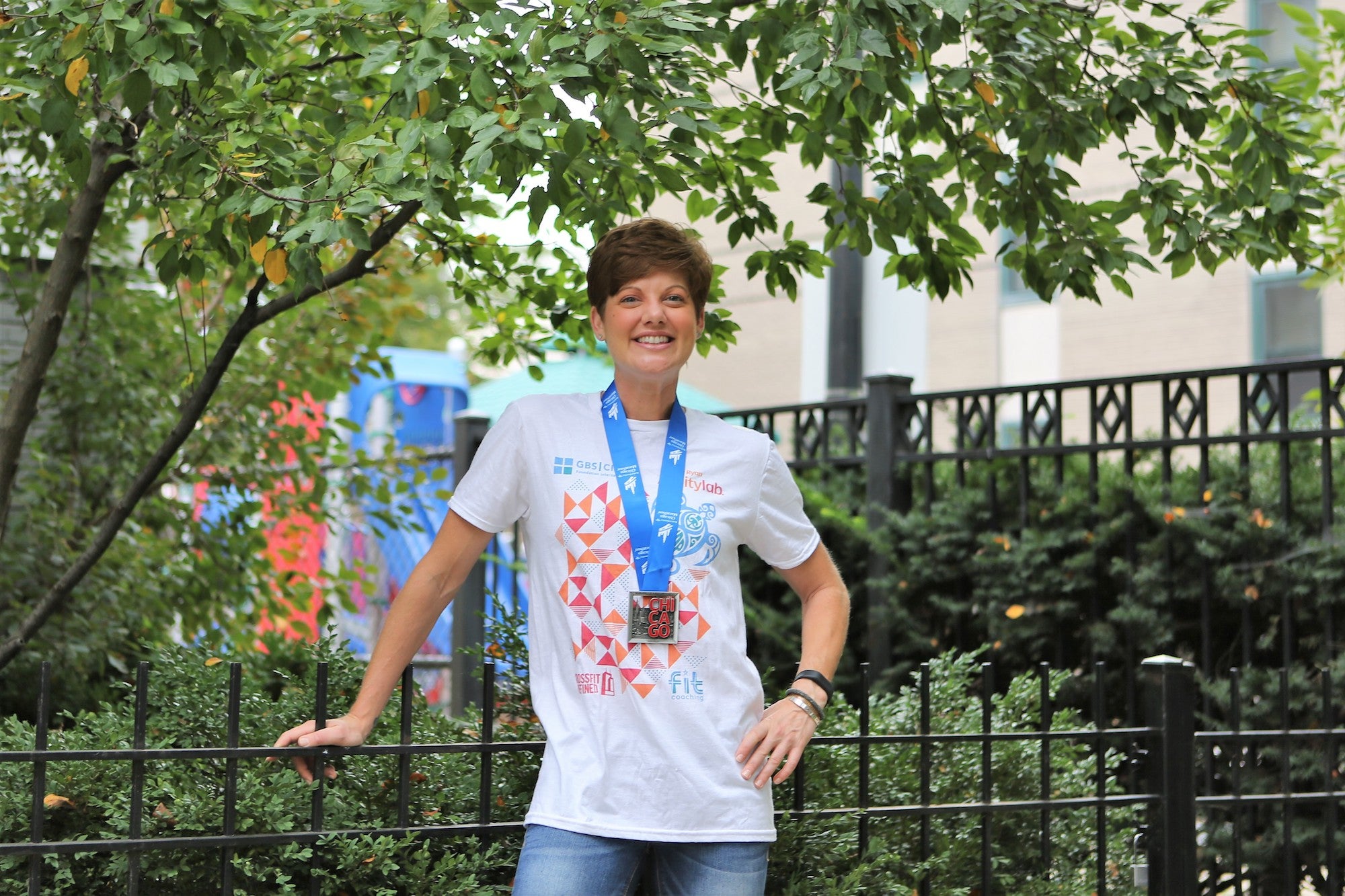From an Autoimmune Disorder Diagnosis to a Chicago Marathon Finish

More than 44,500 runners successfully crossed the Chicago Marathon finish line on Oct. 8, 2018. For Lynn Rogers, completing the race served as a triumphant end to a year marked by a journey she never expected to take. This was Rogers’ 11th time running the marathon—but these 26.2 miles were different.
The first sign was a tingling in her hands, which started in July 2017. Her feet and tongue quickly followed suit. Rogers, a research scientist at Shirley Ryan AbilityLab in Chicago, knows the brain and nervous system well; she earned her Ph.D. in biomedical research and studies movement disorders through the use of noninvasive electromagnetic stimulation.
Rogers was used to treating and researching symptoms such as these, but she’d never experienced them herself. Perplexed, she sought help, but answers didn’t come easily.
Despite her worsening symptoms, Rogers flew to Canada to compete in an Ironman triathlon but was unable to finish the race and took a last-minute flight home. She was admitted to the same hospital in which she conducts her own research and finally received a diagnosis: Guillain-Barre syndrome (GBS), a rare autoimmune disorder in which the immune system attacks the nerves. Later, she learned she had chronic inflammatory demyelinating polyneuropathy (CIDP), the chronic variant of the disease in which the legs and arms lose their sensory function.
After spending more than 10 years studying movement disorders, Rogers was so debilitated at the beginning of her stay in the hospital that she was paralyzed from the waist down. She began receiving plasma exchange treatment and physical therapy, both of which allowed her to slowly rebuild her muscles and stamina. She left the hospital four months later, continuing to receive treatments at home.
Rogers still deals with the symptoms of the disease, including numbness and tingling in her extremities and lips, vision and hearing changes and fatigue. Her symptoms also include pain in her feet—pain that is aggravated by running.
Rogers’ goal coming out of this experience wasn’t just to make progress. She drew from the lessons she learned as a runner to continue moving forward. “I think that runners have to put themselves in a unique position to be able to come back from whatever life sends,” Rogers says. “My feet are going to hurt. I would rather them hurt and be back doing the things that I like to do and love to do and with the people I love to do them with, as opposed to just sitting around thinking about how my feet hurt.”
Rogers’ perseverance and runner’s spirit spurred her forward, but in order to push herself even further, she needed to think like a scientist. Rogers hired a coach to help her train and find a plan that would work for her. “As a scientist, I felt like just a constant experiment, except there was only one person in this experiment,” Rogers says, “which is a terrible, terrible way to do science.”
Taking into account every variable, Rogers slowly built up her running so she could return to the Chicago Marathon. Working through the unknowns surrounding these types of disorders and the stark lack of evidence and research, Rogers came to a renewed understanding of the reality of the patient experience and the pressing need for more information.
As part of her quest to show people what is possible in situations like hers, Rogers decided to raise money for GBS and CIDP while preparing for this year’s Chicago Marathon. “I have a degree of confidence to say, regardless of what is known, we can move forward,” Rogers says. “I just believe that, whatever it is that we are dealing with, we can still work hard and try to see where we get.”